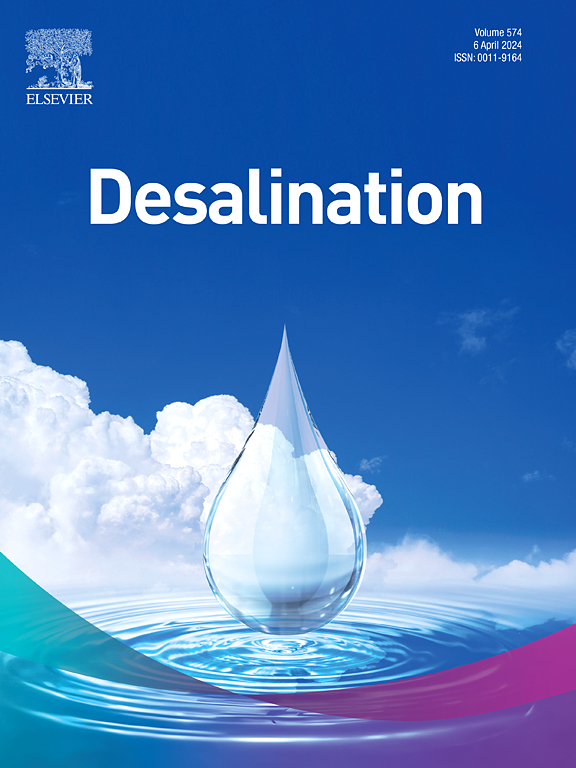Recent progress in solar-driven interfacial evaporation: Evaporators, condensers, applications and prospects
IF 9.8
1区 工程技术
Q1 ENGINEERING, CHEMICAL
引用次数: 0
Abstract
Solar-driven interfacial evaporation (SDIE) technology has a promising application in solving the freshwater crisis, especially in areas with the limited freshwater resources. Rapid water evaporation at the interface is achieved by using the photothermal materials with broad absorption of the solar spectrum in combination with an evaporator design. In this case, the resulting vapor is condensed to produce fresh water. This provides a process that can be continuously produced to address the fresh water crisis. With more in-depth research, researchers have proposed more advanced and effective strategies to improve the evaporation and condensation performance of SDIE systems. However, there is a lack of a comprehensive and systematic summary and overview of the various advanced design strategies for evaporators and the development of condensers. In this review, we highlight the optimization strategies for solar evaporator in solar absorption, energy management, water transport, salt treatment, water-existing forms and other energy utilization to achieve efficient water evaporation. In addition, we primarily discuss the progress in condenser research, from active to passive condensation. Finally, we discuss the extended applications of interfacial evaporation such as wastewater treatment, power generation, lithium extraction and hydrogen generation with interfacial photothermal catalytic. The purposes of this paper are to introduce advanced evaporator design schemes that increase the rate of water evaporation, as well as to present research advances in the design of condensers that improve vapor condensation, thereby guiding the production of more fresh water.
太阳能驱动界面蒸发的最新进展:蒸发器、冷凝器、应用与展望
太阳能驱动界面蒸发(SDIE)技术在解决淡水危机,特别是在淡水资源有限的地区具有广阔的应用前景。利用具有广泛吸收太阳光谱的光热材料与蒸发器设计相结合,实现了界面水的快速蒸发。在这种情况下,产生的蒸汽被冷凝成淡水。这提供了一个可以不断产生的过程,以解决淡水危机。随着研究的深入,研究人员提出了更先进、更有效的策略来提高SDIE系统的蒸发冷凝性能。然而,对于蒸发器的各种先进设计策略和冷凝器的发展,缺乏全面、系统的总结和概述。本文综述了太阳能蒸发器在太阳能吸收、能量管理、水输送、盐处理、水存在形式等能源利用方面的优化策略,以实现高效的水蒸发。此外,我们主要讨论了冷凝器的研究进展,从主动冷凝到被动冷凝。最后,我们讨论了界面蒸发在废水处理、发电、锂提取和制氢等方面的扩展应用。本文的目的是介绍提高水蒸发速率的先进蒸发器设计方案,并介绍改善蒸汽冷凝的冷凝器设计的研究进展,从而指导更多的淡水生产。
本文章由计算机程序翻译,如有差异,请以英文原文为准。
求助全文
约1分钟内获得全文
求助全文
来源期刊

Desalination
工程技术-工程:化工
CiteScore
14.60
自引率
20.20%
发文量
619
审稿时长
41 days
期刊介绍:
Desalination is a scholarly journal that focuses on the field of desalination materials, processes, and associated technologies. It encompasses a wide range of disciplines and aims to publish exceptional papers in this area.
The journal invites submissions that explicitly revolve around water desalting and its applications to various sources such as seawater, groundwater, and wastewater. It particularly encourages research on diverse desalination methods including thermal, membrane, sorption, and hybrid processes.
By providing a platform for innovative studies, Desalination aims to advance the understanding and development of desalination technologies, promoting sustainable solutions for water scarcity challenges.
 求助内容:
求助内容: 应助结果提醒方式:
应助结果提醒方式:


